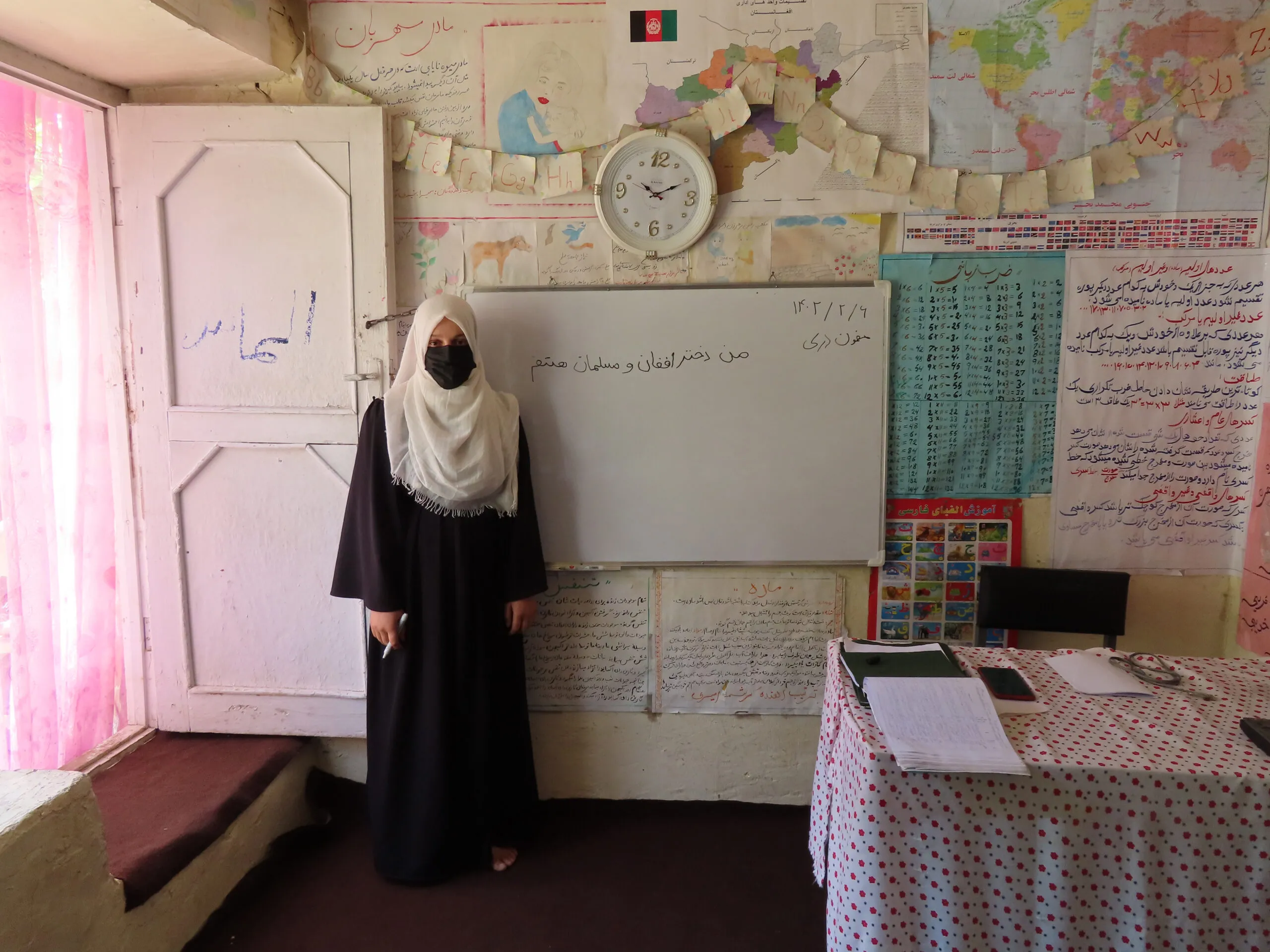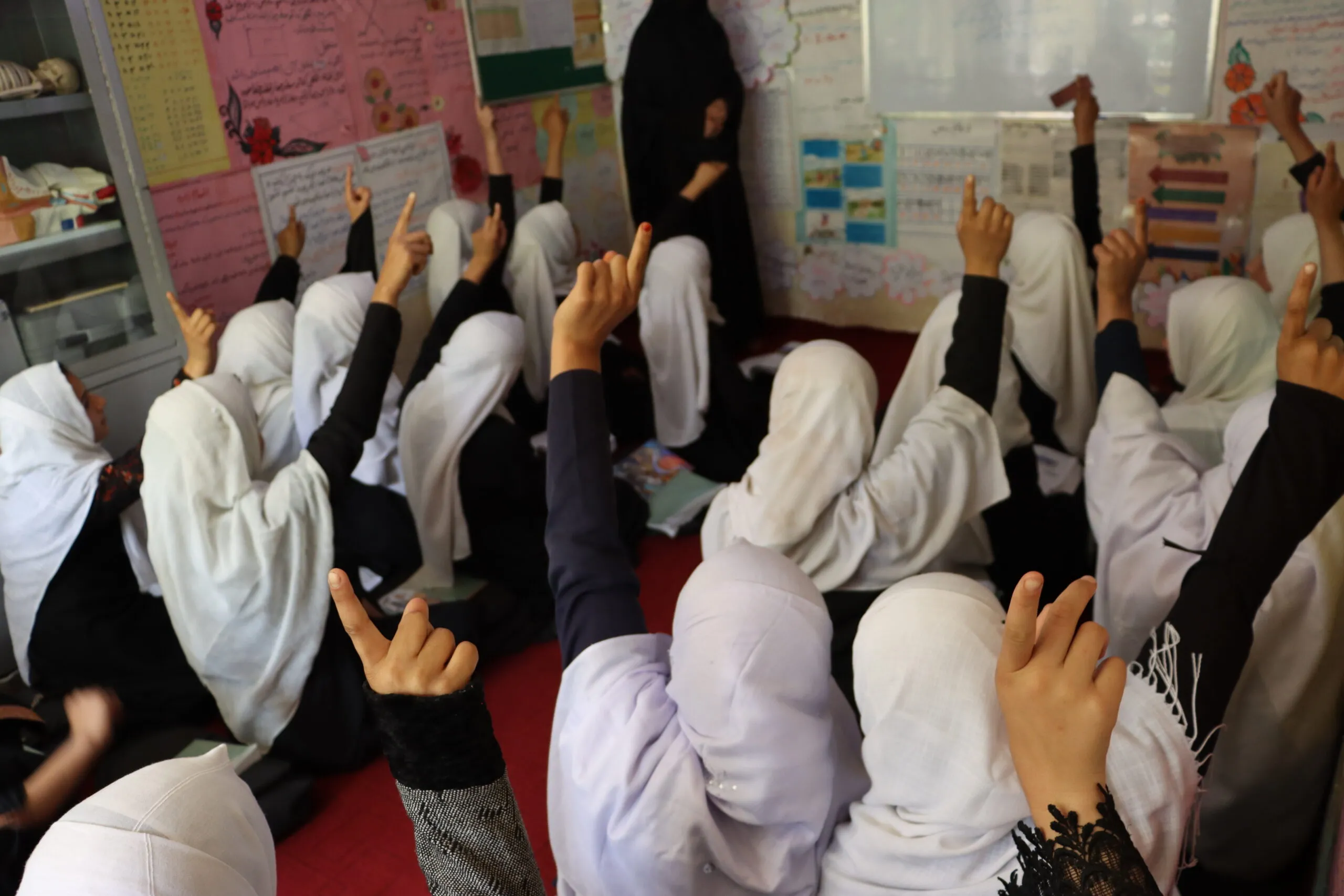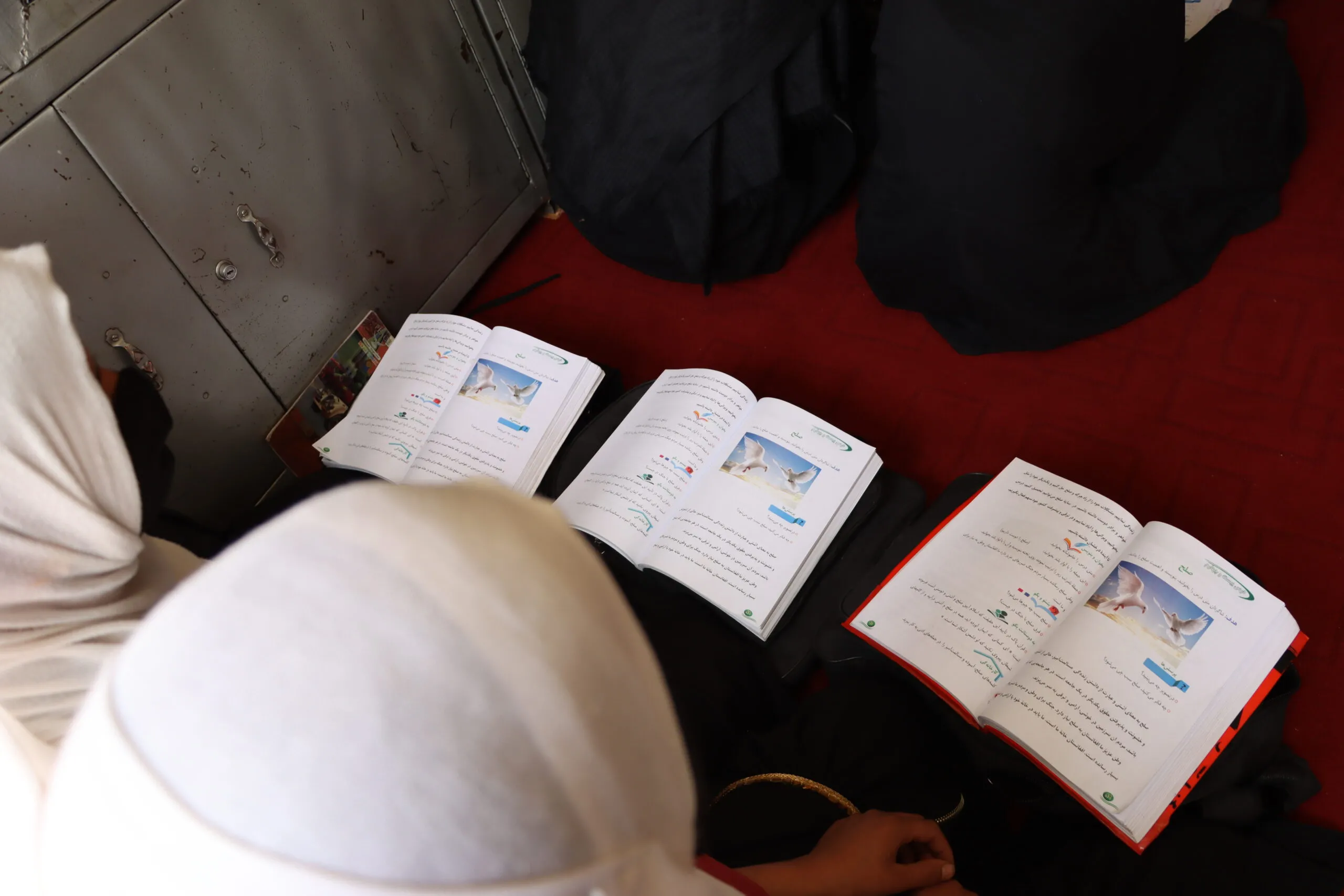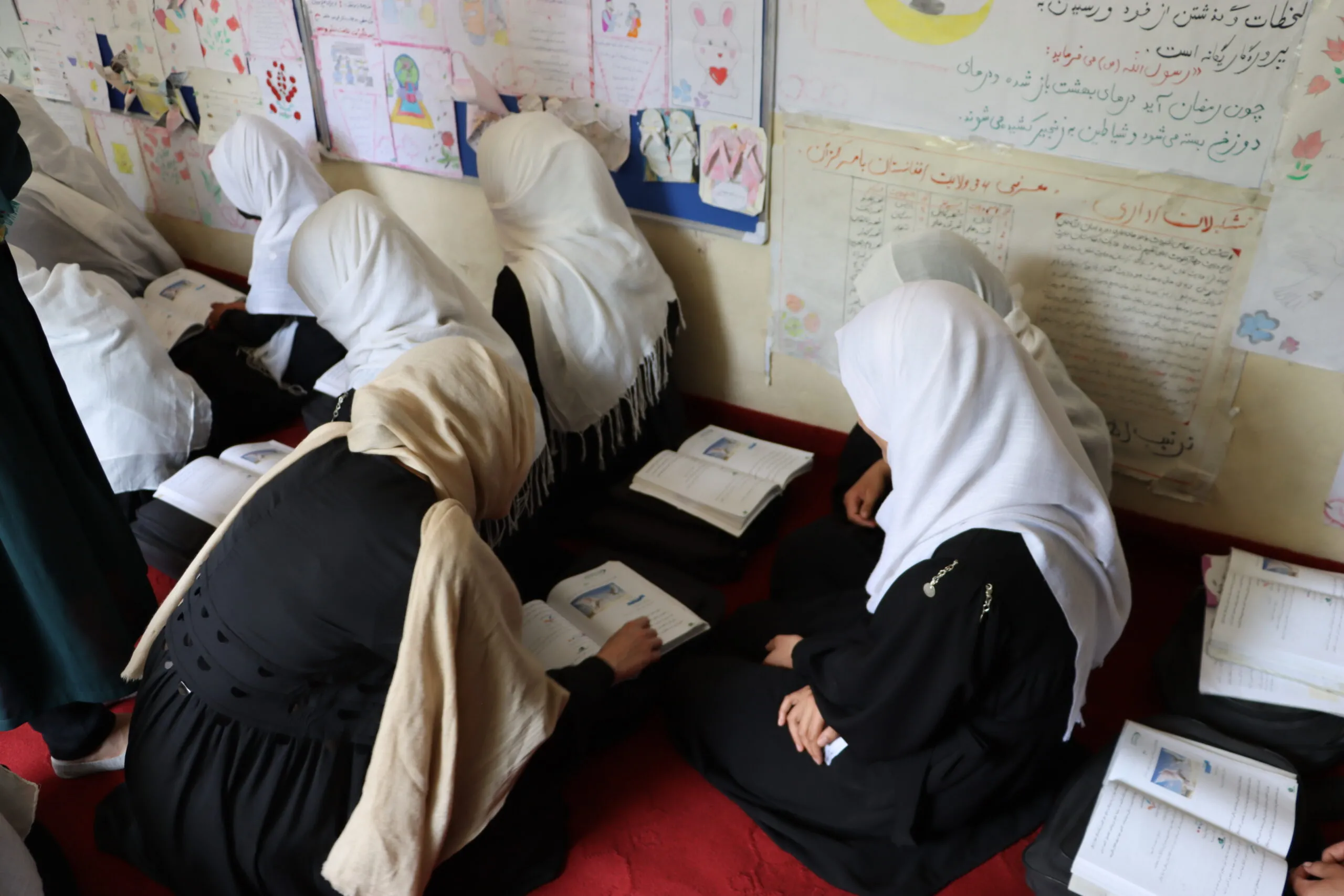Ban on girls’ education
Many schools in Afghanistan closed in August 2021, when the government officially changed hands. In the following months, schools for boys and young men gradually opened, but, while plans were there to open educational institutions for girls and women as well, that hasn’t happened.
In September 2021, the De Facto Authority suspended all forms of formal education for Afghan girls over the age of 12, leaving 1.1 million girls and young women with no access to formal education.
Then, in December 2022, university education for women was suspended until further notice, affecting over 100,000 female students attending government and private higher education institutions as well.
Since then, girls and young women over the age of 12 have been forced to stay home, waiting for schools, colleges, and universities to reopen for them.
Currently, 80 percent of school-aged Afghan girls and young women – 2.5 million people — are out of school.
Afghanistan is the only country in the world to put a ban on girls’ and women’s access to education, which has cost Afghanistan’s economy an estimated $5.4 billion .




